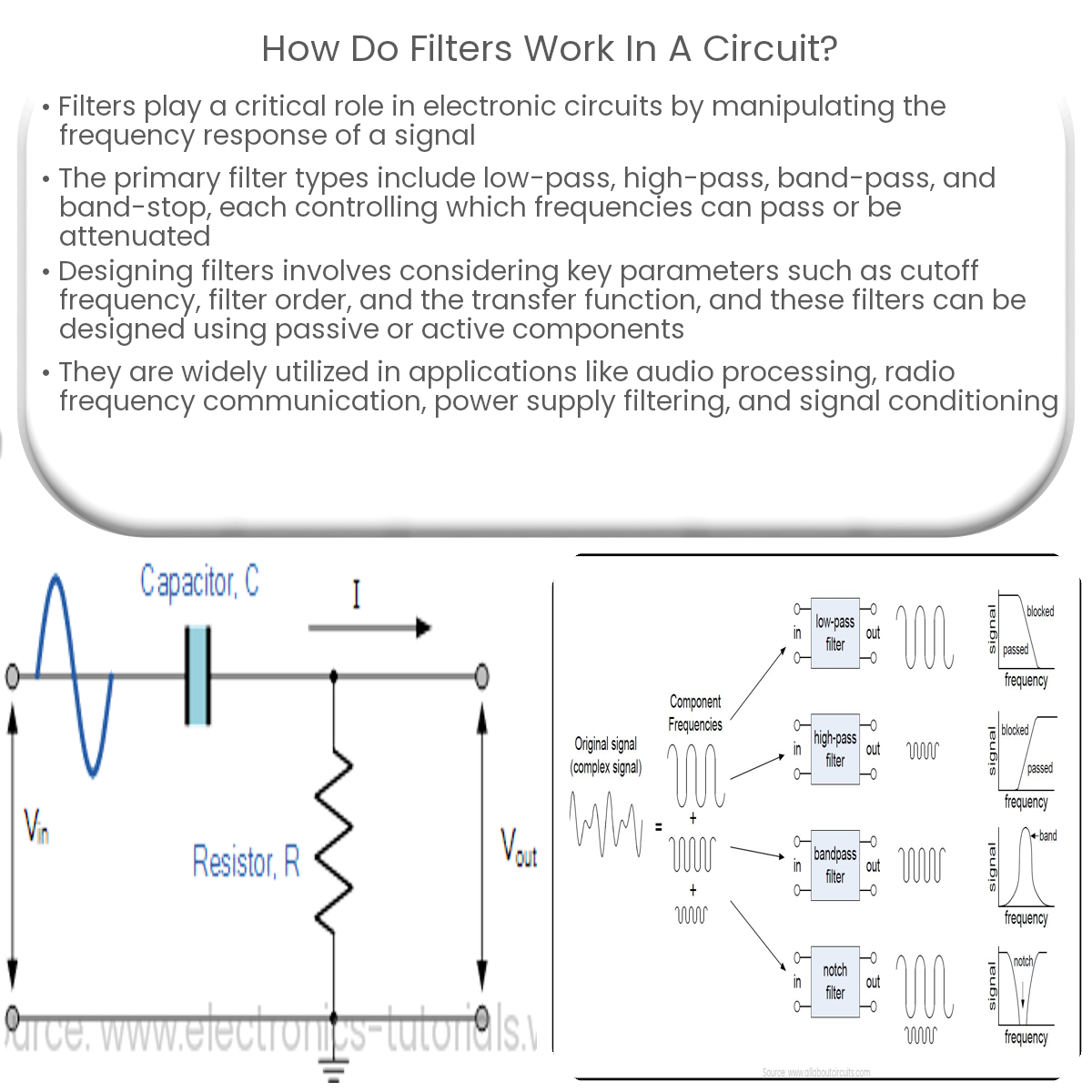Filters in a circuit selectively allow specific frequency ranges to pass or be attenuated, manipulating a signal’s frequency response for various applications.
How Do Filters Work in a Circuit?
Filters are essential components in many electronic circuits that help manipulate the frequency response of a signal. They work by selectively allowing specific frequency ranges to pass through or be attenuated, depending on the desired outcome. The primary types of filters are low-pass, high-pass, band-pass, and band-stop filters.
Types of Filters and Their Functions
- Low-pass filters – These filters allow frequencies below a specific cutoff frequency to pass through, while attenuating higher frequencies.
- High-pass filters – These filters do the opposite of low-pass filters, allowing frequencies above a specific cutoff frequency to pass while attenuating lower frequencies.
- Band-pass filters – These filters allow a specific range of frequencies to pass through, attenuating frequencies outside that range.
- Band-stop filters – Also known as notch filters, these filters attenuate a specific range of frequencies while allowing frequencies outside that range to pass.
Filter Components and Design
Filters are typically designed using passive components such as resistors, capacitors, and inductors or active components like operational amplifiers (op-amps) and transistors. Passive filters tend to be simpler and more cost-effective, while active filters offer better performance and flexibility.
When designing a filter, the key parameters to consider include the cutoff frequency, the filter order, and the filter’s transfer function. The cutoff frequency is the frequency at which the filter transitions from the passband to the stopband. The filter order determines the slope or steepness of the transition. The transfer function describes the relationship between the input and output signals of the filter.
Applications of Filters in Circuits
Filters are used in a wide variety of applications, such as:
- Audio processing – Filters are often employed in equalizers, synthesizers, and speaker crossover circuits to control and shape the audio output.
- Radio frequency (RF) communication – Filters are used in RF circuits to isolate specific frequency bands, remove unwanted signals, and prevent interference.
- Power supply filtering – Filters are used to remove noise and ripple from power supply lines, ensuring a clean and stable power supply for sensitive electronic components.
- Signal conditioning – In data acquisition and sensor systems, filters are used to remove noise and unwanted frequencies, improving the accuracy and reliability of the measurements.
In conclusion, filters are essential components in electronic circuits for controlling and manipulating the frequency content of signals. Understanding how filters work and the various types available is crucial for designing effective and efficient electronic systems.


